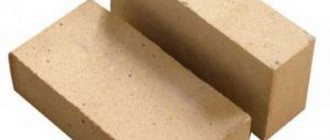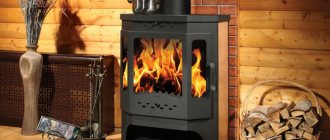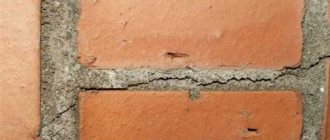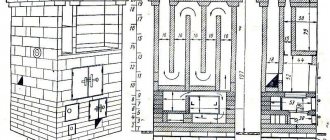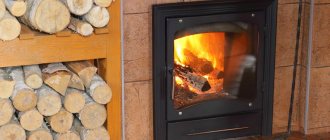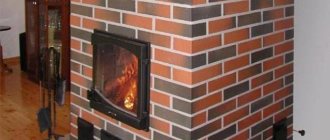Design and principle of operation
Professor Butakov’s “Student” stove has a fairly simple design, it contains:
- two-chamber ash pan;
- firebox;
- air outlet pipes;
- grate;
- chimney;
- cast iron door with glass.
The principle of operation of the furnace used by the professor was known long before his development. Due to the low oxygen content in the fireboxes, the fuel does not burn, but smolderes slowly, releasing a sufficient amount of heat. This is what increases efficiency, eliminating additional bookmarks.
Design of the “Student” furnace
Characteristics
Considering that the Butakov “Student” furnace has various modifications, their sizes and technical characteristics differ significantly. What these devices have in common is the presence of built-in convective channels used to increase heat transfer. Depending on the type, stoves can work both to heat air and provide water heating.
In this mini-review we will look at stoves from.
Wood burning stove
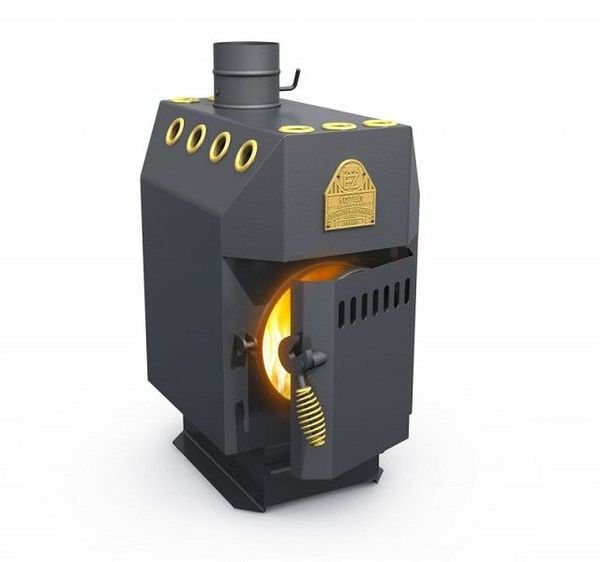
This device is characterized by maximum thermal efficiency and high efficiency, in comparison with coal analogues. It has the following features:
- Tightness of the combustion chamber - the door closes securely, eliminating the formation of cracks.
- Improved control of air supply - the unique design of the gate valve allows you to set gas generation or simply combustion modes.
- High-quality materials - thick-walled structural steel was used to make the body, cast iron was used for the grates and doors.
In addition, the device is characterized by relatively small dimensions, which are:
- 530*780*370 mm;
- chimney pipe diameter 120 mm;
- weight of the entire oven is 77 kg;
- firebox volume 74 l;
- power reaches 9 kW;
- Efficiency is 85%.
The Student stove has an amazing ability to prevent soot from contaminating work surfaces. Even long-term use will not affect the cleanliness of the glass. The burning duration allows you to make bookmarks no more than once every 6-7 hours. The device is equipped with a replaceable grate, which allows air flows to be evenly distributed in the fuel chamber. This eliminates the formation of soot. The design of the ash box allows it to be cleaned without interrupting the combustion process.
Coal furnace
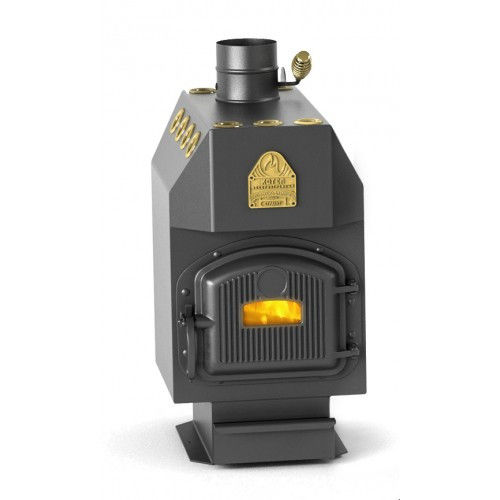
When designing these heating furnaces, the intensity of the thermal load was taken into account. The device has the following characteristics:
- weight – 77 kg;
- firebox volume – 70 l;
- dimensions – 530*370*780 mm;
- Efficiency – 85%;
- Power – 9 kW.
Burning coal requires more oxygen than wood, but produces significantly more heat. Thanks to the 5 mm wall thickness, metal deformation, which can cause rapid breakdown of the furnace, is eliminated. The tightness and thoughtfulness of the design can significantly reduce coal consumption. A similar stove by Professor Butakov “Student”, operating on coal, is an ideal option for systematic heating.
Hydraulic
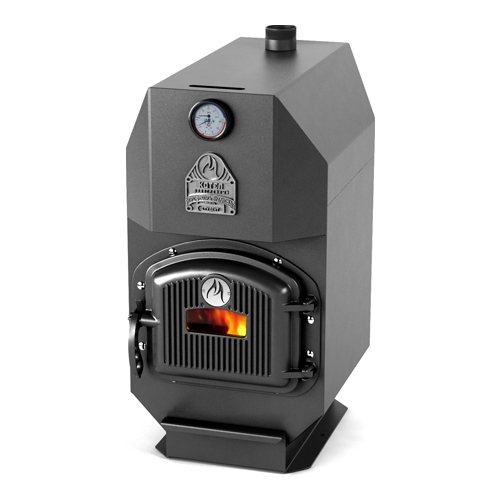
Thanks to the unique design of the heat exchanger, the long-burning Student water-heating stove has a fairly high heat output. The usual coils in it were replaced with convective channels, partially recessed into the firebox. Thanks to these features, the liquid is intensely heated and enters the heating system. This large-sized device has the following characteristics:
- weight - 90 kg;
- power - 16 kW;
- firebox – 70 l;
- dimensions – 720*370*770 mm;
- Efficiency – 85%.
In addition, the design provides for the installation of heating elements, which allows you to maintain the temperature of the coolant for a long time.
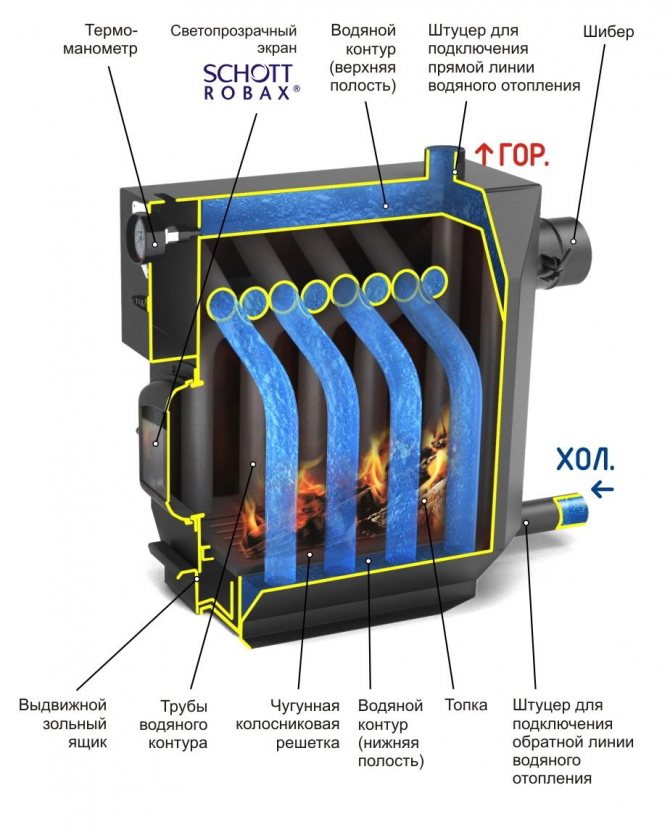
Features of the “Student” furnace design Hydraulic
Attention! Electric heaters can be installed independently or purchased together with the boiler.
Heating stove TERMOFOR Professor Butakov Student with a cast iron door
Wood heating stove with cast iron door, max heated room volume 150 cubic meters, combustion chamber volume 70 l, max power 9 kW, chimney diameter 120 mm, min chimney height 5 m, firebox made of structural steel, weight 68 kg, dimensions LxWxH 530x370x780 mm. The TERMOFOR heating stove Professor Butakov Student with a cast iron door is a solid fuel air-heating boiler, which is designed for economical air heating of residential and industrial premises, garages, basements, greenhouses, barns, kungs, drying chambers, as well as for heating food.
- The stove operates in an economical (gas generator) combustion mode.
- Allowed types of fuel : firewood.
- The boiler body is an all-welded structure of the original type, made of special structural steel 3 mm thick. Thanks to this, the walls of the furnace quickly heat up and just as quickly begin to warm up the air of the heated room.
- The boiler consists of convection pipes surrounding the combustion chamber. Their surface is effectively used to transfer heat to the air of the heated room circulating through them. A specially organized labyrinth of convective pipes and gas guide screens in the upper zone of the combustion chamber allows for more complete use of the body of gases escaping into the chimney. This system consists of pipes with open ends sealed between the top cover and the bottom of the housing. There are curved pipes on the sides of the chamber, crossing at the top, and straight pipes in the back and front parts of the combustion chamber. The pipes are completely exposed to the flame, and the front and rear walls of the furnace are also included in the heat exchange process. The inlet openings of the convective pipes are located at an elevation from the floor level, which is favorable for the free convection of heated air. Special jets supply hot air to burn out the exhaust gases.
- The firebox is made of heat-resistant steel and has the shape of a flame of freely burning solid fuel.
- The cast-iron door with a translucent screen made of heat-resistant Schott Robaxx glass rotates on hinges and has a cavity with a seal installed in it. The locking mechanism securely locks the door in the closed position by turning the handle. The door can open up to an angle of 120 degrees.
- A grate made of structural steel 3 mm thick is installed in the lower part of the firebox.
- A retractable ash drawer located under the firebox helps to clean the stove accurately and easily without interrupting the combustion process.
- You can heat food on the top surface of the oven .
- For the purposes of fire safety and regulation of the gas-dynamic process in the working furnace, a damper is installed on the smoke channel in a place accessible for operation.
- Due to the additional heat remover from the side convection pipes, it is possible to direct the heated air through the air ducts to adjacent (adjacent through the wall) rooms. NOT INCLUDED IN THE DELIVERY SET AND MUST BE PURCHASED SEPARATELY.
- For normal operation of the stove, a chimney with a length of at least 5 meters is required. CHIMNEY PIPES AND ALL CONNECTING ELEMENTS ARE NOT INCLUDED IN THE DELIVERY SET AND ARE PURCHASED SEPARATELY. ATTENTION! THE STRUCTURES OF THE ROOMS AROUND THE FURNACE AND CHIMNEY PIPE MUST COMPLY WITH THE REQUIREMENTS OF SNiP 01/41/2003.
Advantages and disadvantages
The devices have a whole list of advantages that are very valuable for products of this kind. Among them it is worth highlighting the main aspects:
- quite convenient installation that does not require specific skills and the construction of additional foundations;
- rapid removal of ash, which can be done even during combustion;
- The design of the heating stove by Professor Butakov “Student” provides for an organic combination with any interior.
- large heating area;
- presence of air cooling;
- sufficient dimensions of the heating surface;
- functional firebox, equipped with control of air supply, as well as combustion intensity;
- replaceable grates.
However, despite such a number of positive qualities, there are also some disadvantages. These include:
- strong surface heating;
- the need to wet the ash before removing it from the firebox;
- requires the use of enhanced thermal insulation for chimneys.
Nevertheless, the Student heating stove has many more advantages than disadvantages that do not affect the functionality of the device.
Making a Butakov heating stove yourself
First you should study the boiler diagram. An air-heating boiler is no different from the assembly of gas generator options. The basis is an ordinary metal barrel.
Sequence of self-assembly of the stove:
- The top of the barrel is cut off with a grinder. The edges are curled.
- A circle is cut from a steel sheet, the diameter of which is smaller than the barrel.
- Holes are made in the circle - 10 cm in diameter. Then a pipe is welded to it.
- The lower part of the pipe is equipped with channels. They must remain mobile. When burning, they press on the fuel, observing the combustion conditions.
- A damper is mounted at the top of the pipe, the diameter of which corresponds to the diameter of the pipe. We drill a hole at the edge. The flap is screwed on. In the future, it will control the air supply.
- The edges of the lid are bent. Holes 10 cm in diameter are made in it.
- The pipe is welded to the pancake and removed through the hole in the lid.
- The base for the furnace will be a brick platform.
- The housing is equipped with a hole for the chimney. A chimney is welded on top.
- An ash pit is made below. To do this, cut a hole and install the doors. The container is also installed there.
- The chimney is welded from below. An elbow is installed to it, the stove is connected, and then the structure is fixed.
The basis for the stove can be not only a barrel, but also any other metal container. So for these purposes, use a gas cylinder or fire extinguisher. In this case, it is enough to simply remove the upper part of the device using a grinder.
Features of installation and assembly
Considering that the surface of the device gets very hot, the installation provides enhanced thermal protection for floors and walls. This can be done in the following sequence:
- A basalt slab is laid on a wooden or other combustible floor, the surface of which should be sheathed with metal.
- Walls located close to the device are protected with basalt insulation. This will reduce the distance between the wall and the stove to 50 cm.
- The presence of supply and exhaust ventilation, both forced and natural, is unacceptable when installing a stove.
- When laying a chimney, you will need to protect the walls from heat. To do this, install a special fireproof cutting and spark arrester.
If you plan to heat adjacent rooms with heated air, you will need to connect thermal extractors and additional air ducts. The oven is installed in such a way as to facilitate the installation of the corrugated pipe.
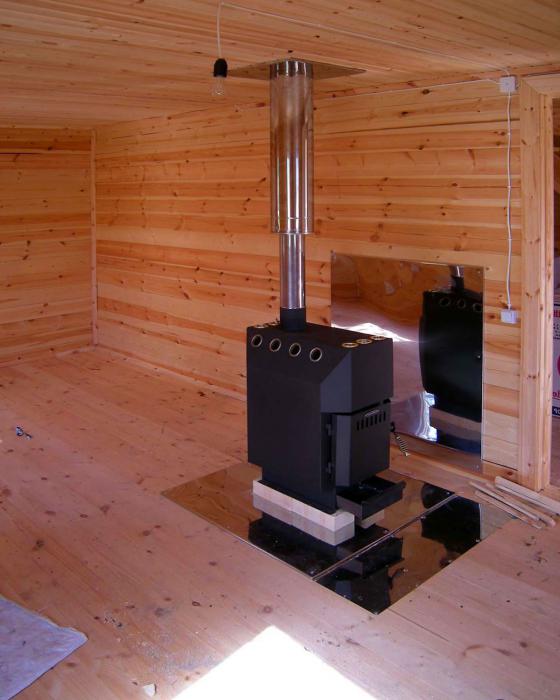
Installation example

Another installation option (in the corner)
User manual
It is worth considering that the “Student” dacha stove is a gas-generating equipment that imposes special requirements on the quality of the fuel used.
- It is recommended to use firewood whose humidity does not exceed 25%, since rawer fuel will not allow the unit to switch to gas generation mode. This can provoke a decrease in efficiency with increased fuel consumption.
- For coal modifications, firewood is used as needed. To do this, you will need to completely pull out the grates. When using wood or peat briquettes, the gap between fillings increases significantly. It also generates 28% more heat than wood.
Attention! It should be taken into account that the design of wood-burning modifications does not include the use of coal.
Buying tips
In order for an ignorant user not to make a mistake when buying a stove, it is necessary to know how the original Novosibirsk Termofor product differs from a fake. Considering that the product is designed for long-term combustion, high-quality material is used for its manufacture: thick steel for the body and durable cast iron for the grates and doors. It is the design of the firebox door that is the main difference between the original and the fake.
Depending on the modification, the cost of the structure starts from 15,000 depending on the model. Considering the high functionality and efficiency of the devices, the price of Professor Butakov’s “Student” stove is quite adequate, which allows everyone to economically heat their country houses.
Advantages and disadvantages of the Butakov furnace
Among the disadvantages it is worth noting the following:
- High temperature of the steel casing may cause burns.
- When the unit is turned off, it cools down quickly, and the room temperature also drops quickly.
Now a little about the advantages:
- The ash box is large enough and does not require frequent cleaning.
- Butakov's oven is not large, but roomy.
- The construction is durable, which is facilitated by the materials used (cast iron, steel).
- Durable, unpretentious in use.
- The upper part of the model can be used as a hob.
- The fuel can be anything, from firewood to peat or paper.
- Externally aesthetic.
- Installation is quick.
- Eco-friendly.
- Fireproof.
Butakov’s heating devices are widely used due to the uniqueness of their design. In the manufacture of such equipment, inexpensive and reliable materials are used, so that such a heating installation is designed for a long period of operation. In this case, the user is only required to periodically remove accumulated ash using a special container. It collects all the slags formed during combustion, so maintenance comes down to cleaning a special container.
The heating installation is unpretentious in terms of fuel - you can use wood waste, coal, pellets, and ordinary firewood. The only thing is that you should not use resinous wood, which leads to increased formation of soot - everything else can be burned in this firebox without any problems.
Butakov's universal models provide a convenient combination of heating and cooking system. The outer surface of the heater, which is in direct contact with the firebox, can be used as a cooking surface. Such a panel will be very hot, in particular, the temperature can reach 350 degrees Celsius, so such an installation can easily replace a hob.
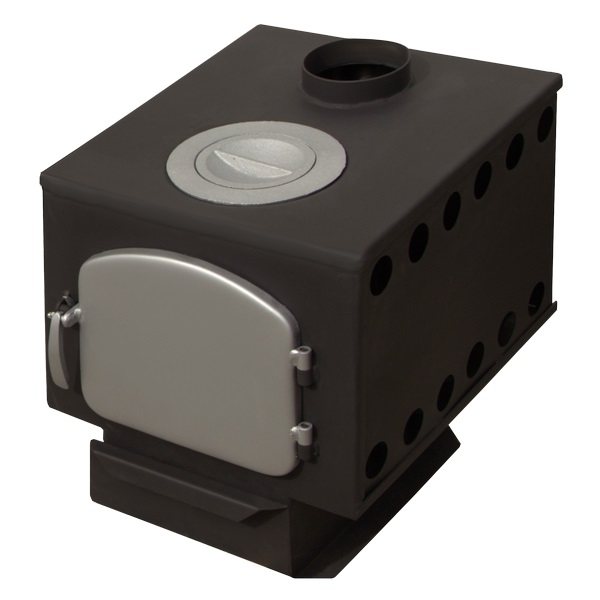
Heating and cooking stoves "Gimnasist"

